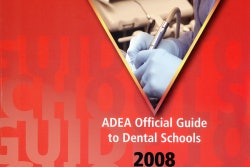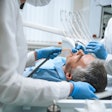
Are you friendly with any dental students looking for residencies? You might want to start pulling any strings -- or at least offering any advice -- you've got to help out.
By November 21, would-be orthodontic residents must submit their rankings of residency programs to the Dental Match, the U.S. postdoctoral dental matching program. The deadline for general practice and other specialties isn't until January 9. But already there are signs that the competition will be hotter this year.
Last month, Newark Beth Israel Medical Center announced plans to slash several programs with its dental clinic and residencies among those on the potential chopping block. The hospital cited "Drastic Medicare and Medicaid reimbursement deficits and the growing demands for charity care services with decreasing charity care reimbursement."
Postdoctoral programs come and go. In fact, Delta Dental of Kansas last month pledged $3 million to start an advanced education in general dentistry program at Wichita State University. And it's too early to tell whether the healthcare crisis has hit other residency programs. But figures from the Dental Match show growing signs of overall scarcity.
The Dental Match, run by the National Matching Service, attempts to reconcile each applicant's ranking of residency programs with each residency program's ranking of applicants.
While more people are graduating from dental school and applying for residencies through the Dental Match, the number of positions available has not kept pace. From 2004 to 2008, the number of applicants in the match increased by 14%, while the number of positions offered increased only 8%, resulting in 15% more unmatched applicants.
Next year, expect the same pattern, said Elliott Peranson, president of the National Matching Service. "Right now it looks like the number of applicants is going up a bit."
Not every residency program participates in the Dental Match; some make direct offers to their applicants. Total statistics on dental school graduation and residency program enrollment are not yet available for 2007, let alone the current year.
But statistics for previous years, collected by the ADA, show a similar trend. From 2005 to 2006, the number of dental school graduates increased by 37 while the number of students enrolled in a postdoctoral program decreased by 49.
"More people have just gone out into practice" without completing postdoctoral training, said Todd Thierer, D.D.S., M.P.H., a University of Rochester associate professor of dentistry and vice president of the Council of Hospitals and Advanced Education Programs.
The pressure may mount. "There has been a lot of interest in making a postdoctoral year mandatory for general dentists," said Dr. Thierer. New York and Delaware already require dentists to complete a residency as a condition of licensure. Other states, including California and Minnesota, offer students the option of completing a residency in lieu of passing a licensure exam.
The momentum in this direction has run into a backlash, Dr. Thierer said, partly because dental students graduating with huge debt can ill afford to spend a year doing a residency for low or no pay. Some dental schools are offering more practical experience at community clinics.
But for specialty practice, the residency is already required. With fewer available per applicant, more dentists may have to give up dreams of focusing on braces, kids, or gums.



















